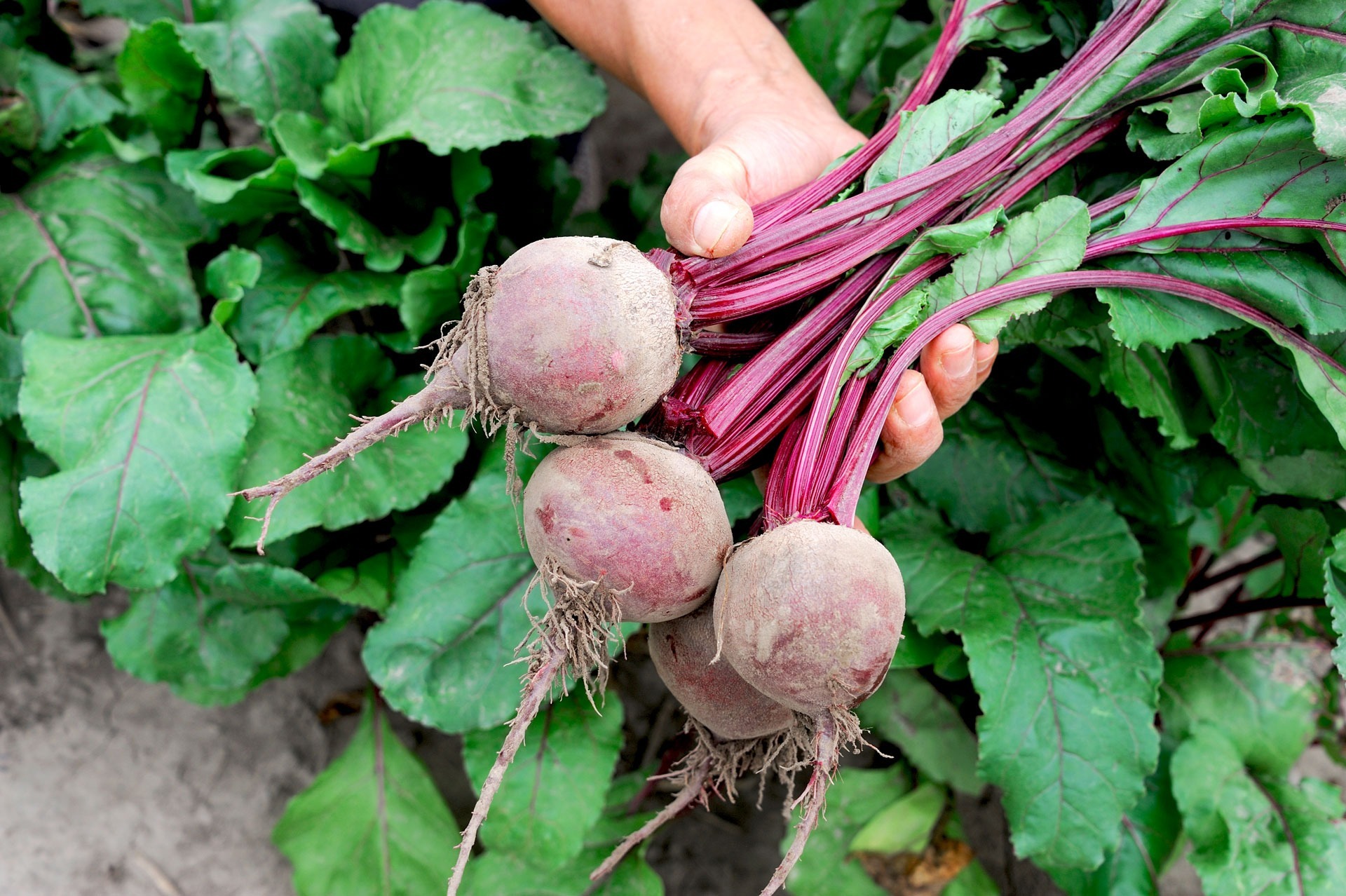Your New Favorite Vegetable Recipes Are in Abra Berens’ Plant-Based Cookbook “Ruffage”
My best friend is a vegetarian, but that doesn’t mean he’s good at cooking vegetables. His go-to side dish is a bowl of tortilla chips, usually paired with a burrito or tofu tacos, and his vegetable phobia is something he’s repeatedly asked me to help him address. So I immediately thought of him as I flipped through the pages of Abra Berens’s new cookbook “Ruffage” last week, since it has so many approachable options to sub-in for those chips. And it’s not even a vegetarian cookbook.
Instead, Berens has billed “Ruffage,” as a practical guide to vegetables. She gets that vegetables can be intimidating and making an entire meal out of them, downright dumbfounding. Which is exactly how my friend feels, by the way. To help him, and all the other confused-by-veggies cooks out there, she’s put together 100 practical recipes (along with numerous variations on each). It’s weeknight cooking that highlights produce’s natural flavor, without too much fuss. Yes, she admits vegetable cooking can be daunting. But she wants to remind you: “You are in charge, not the cauliflower…. [and by] playing to the inherent strengths of a particular ingredient, you can coax out the most delight with the least amount of fight.”
Berens has spent time as a farmer (she cofounded Bare Knuckle Farm), time as a chef (places like Michigan’s Zingerman’s Deli and Chicago’s Local Foods) and time feeding lots of people (she currently cooks dinners for private events at Granor Farms). The cookbook combines her wisdom from all three worlds: it will teach my friend how to shop for produce like a farmer, how to taste it like a chef and how to prepare it like a home cook who wants to get dinner on the table in 30 minutes. For anyone feeling a bit cauliflower clueless, for example, the book includes tips for shopping for the veg (i.e. Look for cauliflower with leaves still attached, you can cook them like kale!), along with several recipes to try out.
Even though the cookbook is not completely vegetarian — some recipes include meat, fish or dairy — I know my buddy will find great inspiration for vegetarian meals, sans tortillas chips. The book would be great for anyone wanting to jazz up their plant-based diet, wondering what to cook for this week’s Meatless Monday dinner or bring their vegetable side dish skills to the next level. We’ve got some of her “Ruffage” tips to get you started:
Start with No Plan
Every cook is different. The Type A cook probably needs a detailed menu and shopping list before leaving home, while loosey-goosey Type B can wing it. Berens leans towards the latter, and suggests you try her approach out as well. “I find that my best cooking happens when I go to the market without a planned menu or shopping list,” she says, “allowing myself to be swayed by what looks best and then tailoring my menu to those items instead of the other way around.” Head to the farmers’ market and check out what’s in season, or sign up for a weekly farm share. Once you’ve got your haul, let’s say radishes, for example, flip open “Ruffage.” There you’ll find three different recipes, a pan-roasted, raw, and poached preparation. The wine-poached radishes sound particularly delicious, especially the dill cream cheese and pumpernickel toast variation.
Start with a Well-Stocked Pantry
While Berens is all about finding inspiration at the market (or farm, in her case), the foundation of her recipes is a set list of pantry ingredients. This isn’t the type of book that will send you to the store for an esoteric ingredient you’ll only use once. “A strongly stocked pantry of a few stalwart components ensures that whatever vegetable I have on hand that day can be assembled into a dish, quickly and deliciously,” she explains. The basics include oils, grains and spices, and Berens also offers simple recipes for creating your own pantry staples like mayonnaise, vinaigrettes and dukkah, a combination of ground nuts and spices that she uses to add texture to many dishes. It’s sprinkled on top of her beets and couscous and she uses it to give flair to the classic grilled corn, dressing the cobs with lemon butter, mint and dukkah.

Don’t Fight your Food
Once you have your pantry stocked and your produce bought, it’s time to cook. One of Berens’ biggest tips: don’t fight the vegetables, try to understand them. “Even the most rudimentary understanding of what a plant does has made me a better cook because I am playing to the strengths of the vegetable instead of trying to conform it to my desires.” Take celery, for example: Berens tried year after year to enjoy local, seasonal celery despite it being notoriously “stringy, tough, and mouth-numbingly tannic.” By finally understanding that the tender inner leaves could provide the bright celery flavor she craved, and that a long slow braise would turn the stalks soft and silky, she’s created a dish she’s now “fixated” on. Armed with the knowledge of how things grow and why vegetables taste the way they do, Berens has adjusted her recipes flavorings and cooking times to create the least amount of work for the best flavor.
Try It the Same, but Different
Have you ever made a salad, and thought “This is delicious, and it would taste great with this other ingredient, too!”? Berens basically did that, multiple times, for every recipe in “Ruffage.” That creamy braised celery works perfectly as a side dish for roasted chicken or fish, but Berens has got multiple variations of the recipe, including one with orange goat cheese and paprika that I’m particularly keen on trying. She starts with the same foundational technique — braised celery, poached radishes, grilled corn — and then suggests a variety of flavors that can make the dish dramatically different.
Berens isn’t just offering the reader extra information here. She told me that she hopes home cooks are inspired to create their own variations as well. Not sure what flavors go well together? Hot tip from Berens: “Take a bite of the primary vegetable, close your eyes and see what flavors come to mind. Then make a list of those and try putting them together in some sort of format that works for you.”
Remember, You Are in Charge
While I’d suggest this book to anyone who is looking to find excitement in vegetable cooking or is looking for plant-based recipes, Berens also includes a number of tips that are helpful for just about any cook. Case in point: she admits that classic recipe instructions like “cook until done” or “season to taste” aren’t extremely helpful. However, she reminds readers that “seasoning is intensely subjective and as a cook you need to learn what level of seasoning and acidity you like.” But instead of leaving it at that, Berens includes a basic mayonnaise recipe in the book’s intro that serves as a salt litmus test, with instructions for seasoning with salt and vinegar to discover your personal salt preferences. Because you are the one in charge of those vegetables, after all.
With the weather heating up, this cucumber recipe is one of the first one I’m suggesting to my tortilla-chip eating friend. By charring the cucumbers, Berens gives them a rich, deep flavor that lifts them from simple salad ingredient to a real star side dish. The mix of the fresh interior, plus caramelized exterior, and the combo of cumin, yogurt and parsley, will make a great addition to his taco plate.
(Pro tip: If you are worried about searing the cucumbers in hot skillet, which may cause oil splattering, Berens suggests placing a cast iron pan in a very hot oven for about 10 minutes, adding in the cucumbers, and cooking until the cucumbers are well blistered.)
Recipe: Blistered Cucumber with Cumin, Yogurt and Parsley
Abra Berens, Ruffage
Serves 4
I tend to use Greek yogurt for this because I like the thick texture. If using traditional yogurt, it will be easier to drizzle. Pick your poison. If your onion is making you tear up while cutting, give it a soak in cold water to wick away some of the bite. Then drain and carry on as you would.
Ingredients
3 unpeeled cucumbers (8 oz | 230 g), cut into thick, irregular chunks
¼ cup (60 ml) olive oil, plus more for frying
2 tsp (6 g) cumin seed
1 cup (240 g) yogurt
½ tsp (3 g) salt, plus more for seasoning
1 small red onion or shallot (2 oz | ¼ cup | 55 g), thinly shaved
1 bunch parsley (2.4 oz | 1½ cups | 68 g), stemmed, leaves whole or roughly chopped
Method
Lay out the cucumbers on paper towels, dabbing moisture away from the cut sides.
Heat the oil in a large frying pan until shimmering. Remove from the heat, add the cumin seed, and allow to bloom, about 3 minutes. When fragrant, scrape the cumin oil into the yogurt, add the salt, and stir to combine.
Heat the frying pan with an additional glug of oil until smoking. Sear the cucumbers (in batches if necessary) without crowding the pan, allowing enough space for the steam to evaporate.
Hold your nerve and let the skin blister and burn slightly (watch out for splatter). Flip to sear the other cut sides.
Remove from the pan and sprinkle with salt.
Toss the cucumber with the onion and parsley. Taste and adjust the seasoning.
Dot with the cumin yogurt and serve.

Variations
With Peaches, Mint and Chili Oil
Ingredients
3 unpeeled cucumbers (8 oz | 230 g), cut into thick irregular chunks
2 Tbsp (30 ml) chili oil (page 55)
2 peaches (1 lb | 455 g), sliced
6 sprigs mint, leaves torn off
Salt
Method
Blister the cucumbers, toss together with chili oil, peaches, mint, and a pinch of salt. Taste, adjust, and serve.
With Buttermilk, Tomato and Herb Salad
Ingredients
3 unpeeled cucumbers (8 oz | 230 g), cut into thick, irregular chunks
1 pint (1 lb | 455 g) cherry tomatoes, halved
¾ cup (180 ml) buttermilk
Salt and freshly ground black pepper
2 cups (80 g) picked fresh herbs: any/all of parsley, mint, cilantro, tarragon, dill, chervil, chives, borage, lemon balm
Method
Blister the cucumbers and toss with the tomatoes, buttermilk, a big pinch of salt, and several grinds of black pepper. Taste, adjust the seasoning, and transfer to a serving platter. Garnish with handfuls of the herb salad.
With Red Onion, Vinegar and Dill
Ingredients
1 medium (4 oz | ½ cup | 115 g) red onion, cut into thin slices
¼ cup (60 ml) apple cider vinegar
2 Tbsp (30 g) sugar
1 tsp (6 g) salt
3 unpeeled cucumbers (8 oz | 230 g), cut into thick, irregular chunks
5 sprigs dill, roughly chopped
Method
Combine the onion with the vinegar, sugar, and salt. Blister the cucumbers and toss with the onion mixture. Garnish with the dill and serve.
Reprinted from Ruffage by Abra Berens with permission by Chronicle Books, 2019
More Reading
Can scorecards push supermarkets to do better?
December 9, 2024
What to know about nonstick cookware
December 6, 2024
Resources to help you pickle, ferment, jam, can and more
October 16, 2024
Quinces are due for a renaissance
September 16, 2024
Six unusual greens to try
September 4, 2024
Can sushi be sustainable?
August 26, 2024
These 5 new cookbooks will help you master late-summer eating
July 29, 2024
Cooking oils and sustainability
July 26, 2024
Celebrate seasonal eating with our 5-night late-summer meal plan
July 22, 2024
Interested in foraging your food? Try a guided tour
May 29, 2024

